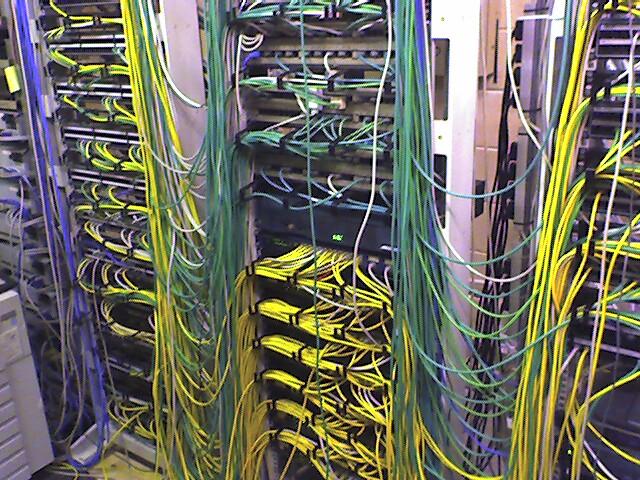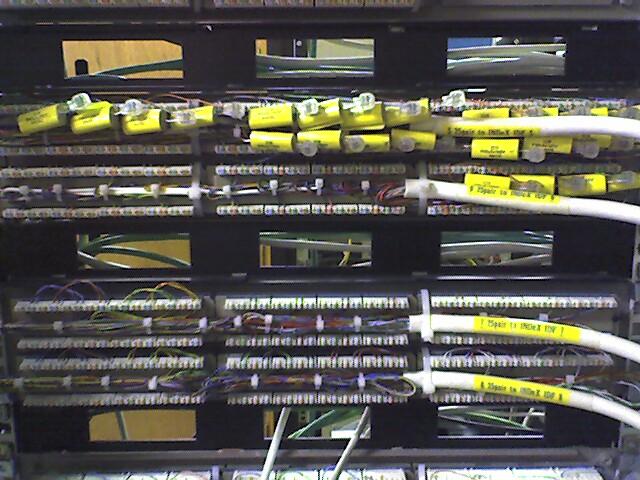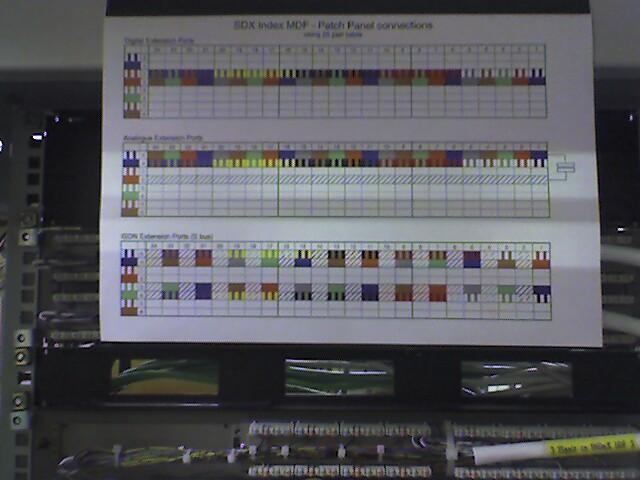Hello,
First of all apologies in advance, this is going to be a hard to describe post!
Basically, we are in the process of moving into a new business premises. Somewhere between the previous guys leaving and us having some building works done, all the BT wiring has been literally ripped out.
The premises consist of an office building, and a separate workshop (separated by a yard)
I was trying to find the incoming cables today but have only had limited success.
From the pole there are two large drop cables, one runs to the far side of the office building (cut off and dangling in free air) and the other appears to terminate in a junction box at the other side of the office. There is also a grey 25 pair cable coming from this junction box back to the point where the drop cable has been cut.
In the Worksop there is also another 25 pair cable terminated in a junction box, this is goes to the pole via a Catenary.
On the dangling cable, I've been through all the pairs with my multimeter and found a single active pair, using a test phone I was able to dial 17070 and obtain the number (which doesn't correspond to any number that the previous business had)
The junction boxes seem totally dead.
Now for my questions (at last)
I was lead to believe that the previous guys had 2 ISDN phone lines installed. Would BT normally fully disconnect these lines hence the reason why I'm only picking up voltage on one pair at the moment? I'm wondering if this remaining analogue line was from a dedicated broadband line.
Also, would BT use one of their poles for customers internal wiring I.e. the multicore that goes from the office junction box to the workshop, if it was a BT business phone system?
Finally, what are BT going to think to all this? I don't know at what point this as all occurred , but we are going to need some lines by Feburary.
I'll probably have some more questions when I try to work through it all, I just wanted to get most of the details into this very long post!
Cheers
First of all apologies in advance, this is going to be a hard to describe post!
Basically, we are in the process of moving into a new business premises. Somewhere between the previous guys leaving and us having some building works done, all the BT wiring has been literally ripped out.
The premises consist of an office building, and a separate workshop (separated by a yard)
I was trying to find the incoming cables today but have only had limited success.
From the pole there are two large drop cables, one runs to the far side of the office building (cut off and dangling in free air) and the other appears to terminate in a junction box at the other side of the office. There is also a grey 25 pair cable coming from this junction box back to the point where the drop cable has been cut.
In the Worksop there is also another 25 pair cable terminated in a junction box, this is goes to the pole via a Catenary.
On the dangling cable, I've been through all the pairs with my multimeter and found a single active pair, using a test phone I was able to dial 17070 and obtain the number (which doesn't correspond to any number that the previous business had)
The junction boxes seem totally dead.
Now for my questions (at last)
I was lead to believe that the previous guys had 2 ISDN phone lines installed. Would BT normally fully disconnect these lines hence the reason why I'm only picking up voltage on one pair at the moment? I'm wondering if this remaining analogue line was from a dedicated broadband line.
Also, would BT use one of their poles for customers internal wiring I.e. the multicore that goes from the office junction box to the workshop, if it was a BT business phone system?
Finally, what are BT going to think to all this? I don't know at what point this as all occurred , but we are going to need some lines by Feburary.
I'll probably have some more questions when I try to work through it all, I just wanted to get most of the details into this very long post!
Cheers




